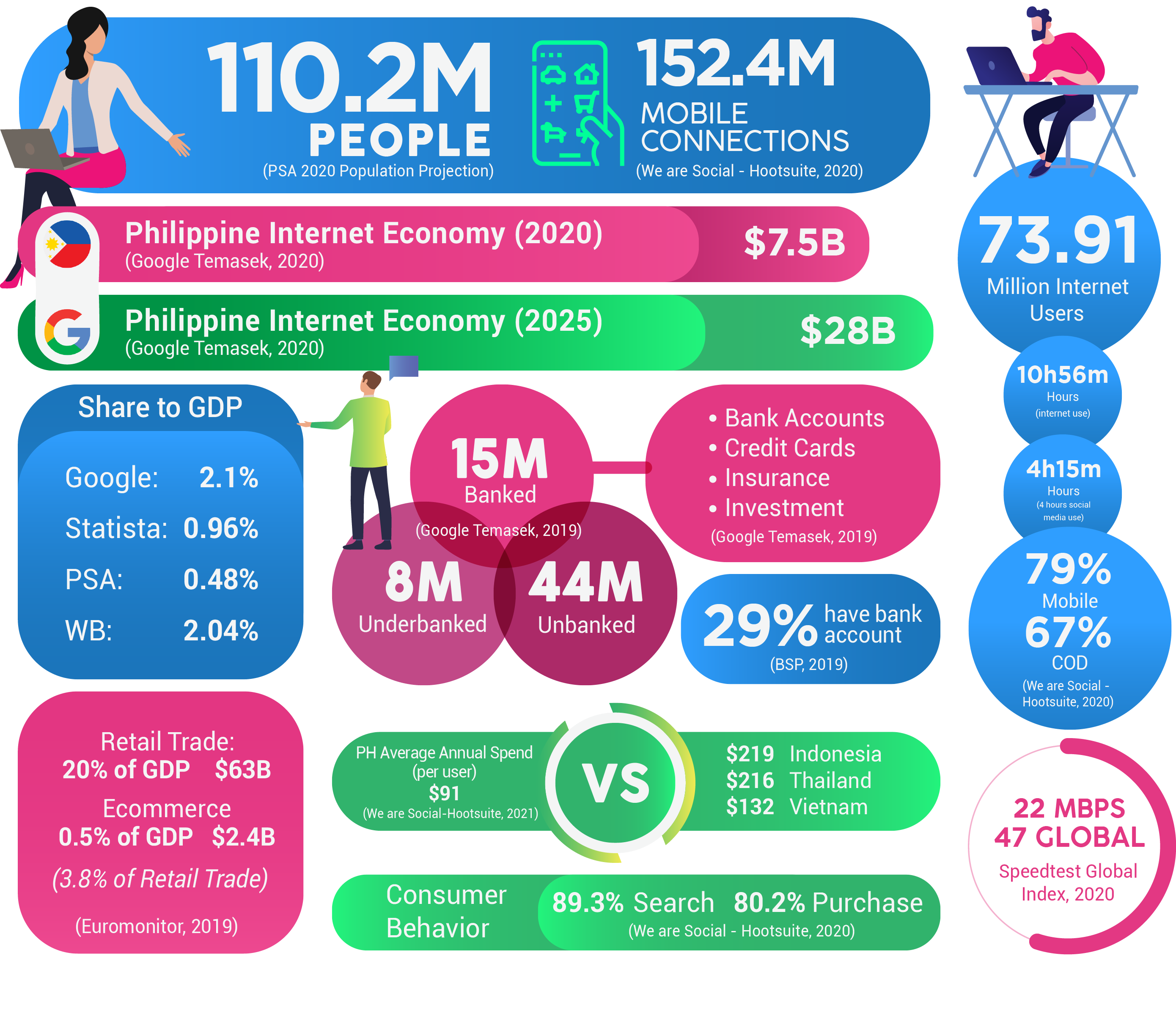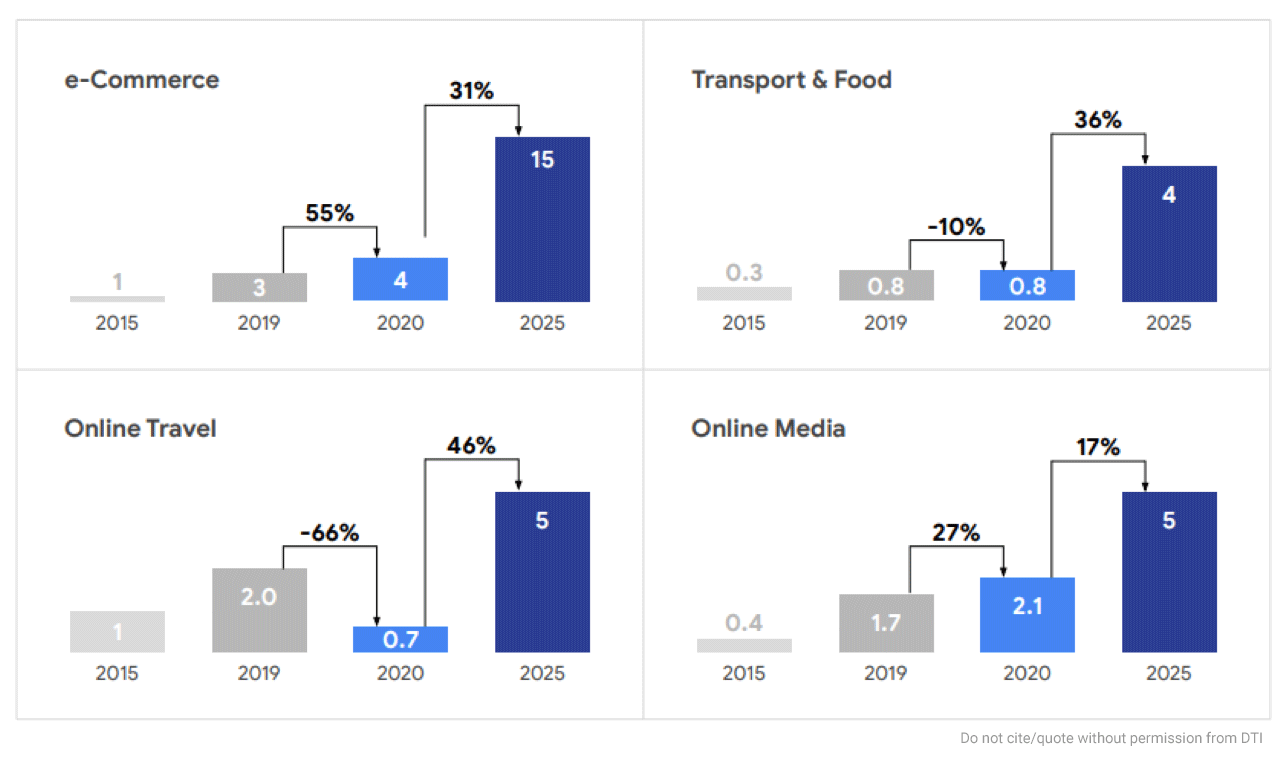Understanding E-commerce in the Philippines
Philippine e-Commerce in Numbers

Filipinos are among the heaviest users of the internet and social media, and greater adoption of e-Commerce has been seen during the pandemic. However, the majority of the population remains unbanked and, therefore, unable to make online transactions. Nevertheless, this is being mitigated by the emergence of payment facilitators that allow cash-on-delivery transactions.
English-speaking Filipino youth drive up online media usage and e-Commerce at a compounded annual growth rate (CAGR) of 27% and 58% from 2019 to 2020. On the contrary, online travel faces headwinds amidst the COVID-19 pandemic.
e-Commerce and Media offsets contraction in Transport and Food and Travel

Compared to its neighbors, the Philippines has the most room for growth - with the internet economy contributing around 2.1% of GDP. Although buoyed by large deals in the digital financial service sector, programs to encourage local innovation and startup investments are much needed.
UNCTAD Business to Consumer Index 2020
Based on the recent report released by the UNCTAD in the 2020 B2C Index, the Philippines fell 10 notches, from 86 place (adjusted) on the 2019 ranking. The country’s Share of individuals with internet increased to 65, the Share of individuals with an account remain unchanged at 35 while scores on secure internet servers and postal reliability dropped to 39 and 40 respectively.
Singapore continues to take the lead among ASEAN, with the highest number of internet shoppers recorded at reaching almost 60% of its population. For this part, internet shoppers in the Philippines, according to UNCTAD is less than 10% of total population, and 17% of internet users.